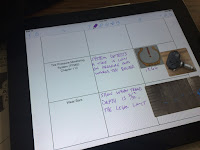Digital Citizenship - Copyright
I created a website for my personal use last year and recently got a message that a photo that I was using on that site was copyright protected and I could be subject to legal fees. Scary, right? This made me think that talking about copyright with our students can not happen enough. Thus began my research into finding resources for teachers to use with their students.
I would like to highlight that I LOVE CommonSenseMedia.org. I use this site as my go to for all of my questions about digital citizenship. (I also use this site all the time in my personal life to check and see if a book or movie is appropriate for my own children.)
When I did my first search on CommonSenseMedia, I found this video. It is a great video to help introduce a unit or just give a friendly reminder to our students.
So how can you or one of your students be sure that an image they are using is "safe"?
Here are a few examples:
You can start by using http://creativecommons.org/. This site allows you to type in a topic you are interested in and then the platform that you would like to use to search for the topic.
Another suggestion is using good old Google. While in Google, type in what you are searching for, select images, search tools, usage rights, and then select labeled for reuse. This will then provide images that match your description that are free to use. The image below highlight this process.
I would like to highlight that I LOVE CommonSenseMedia.org. I use this site as my go to for all of my questions about digital citizenship. (I also use this site all the time in my personal life to check and see if a book or movie is appropriate for my own children.)
When I did my first search on CommonSenseMedia, I found this video. It is a great video to help introduce a unit or just give a friendly reminder to our students.
If the link to this video does not work, you can also try going to the original source, here.
Next, I came across this post, by the Visual Communication Guy, which offered a great flow chart that can be used to decide if an image can be used or not. This site also links to definitions of common vocabulary such as fair use, copyright, creative commons, and public domain.
So how can you or one of your students be sure that an image they are using is "safe"?
Here are a few examples:
You can start by using http://creativecommons.org/. This site allows you to type in a topic you are interested in and then the platform that you would like to use to search for the topic.
Another suggestion is using good old Google. While in Google, type in what you are searching for, select images, search tools, usage rights, and then select labeled for reuse. This will then provide images that match your description that are free to use. The image below highlight this process.
http://www.photosforclass.com/ is another great option that helps keep the search more age appropriate for kids.
While the fair use policy says that it may be ok to use a part of an image for school and education purposes, I think it is always best to be safe and to teach our students about fair use and giving appropriate credit where credit is due.
What methods are you using to teach digital safety and responsibility to your students? Share your experience in the comments section of this post.



Comments
Post a Comment